Many hidden natural treasures are found in Japan, and among the most interesting of these are its caves. These important caves in Japan include mystical limestone formations like Gyokusendo or lava-formed tunnels such as Fugaku Wind Cave, a cave in Japan that ranges from adventure and spirituality to natural history. As such, folks looking to make this discovery should prioritize visiting these caves, which are uber-beautiful landscapes that are not only natural but also culturally significant.
10 Popular Caves In Japan
Here are some of the most popular caves in Japan to explore its wildlife and natural cave formation:
1. Gyokusendo Cave
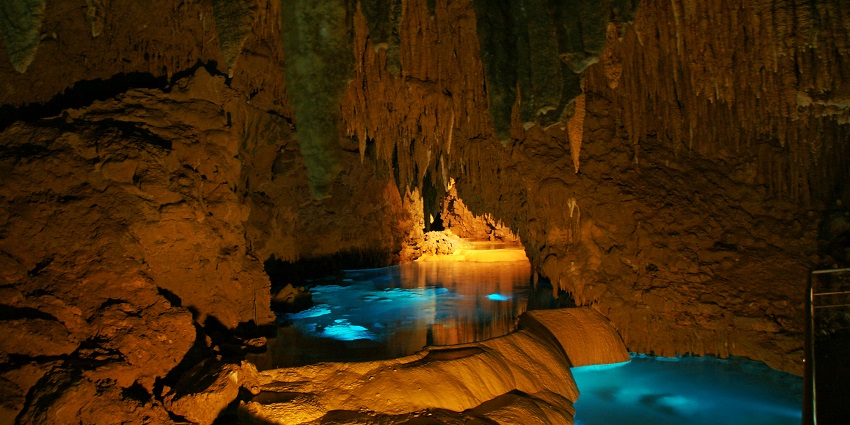
Photo: 663highland / Wikimedia Commons
Gyokusendo Cave is one of the famous caves in Japan and is situated in Okinawa. With stunning stalactites, the cave is 5 kilometres long and comprises underground rivers. A well-lit pathway allows visitors to walk around the otherworldly formations. The formations on the site have been created over 300,000 years. It is part of the Okinawa World theme park that is accessible and educational. Geology enthusiasts and people who visit this cave are attracted to this important cave in Japan. Its interiors are filled with surreal beauty that would create a magical journey through time and nature.
Distance: 15 km from Naha
Best Time To Visit: November to March
2. Fugaku Wind Cave

Photo: Yoshi Canopus / Wikimedia Commons
Fugaku Wind Cave is a natural lava cave, found at the bottom of the mountain on Mt. Fuji in Aokigahara Forest, in the area of the mountain known for its cold temperatures and ice formations. This cave was one of the important caves in Japan that acted as a natural refrigerator in the ancient days. It’s still cool in the cave all through the year, even in summer. Very well-lit and easy to walk around, this is a great little cave in Japan that would make a good short trip underground for historical and geological insight.
Distance: 110 km from Tokyo
Best Time To Visit: April to June
3. Narusawa Ice Cave
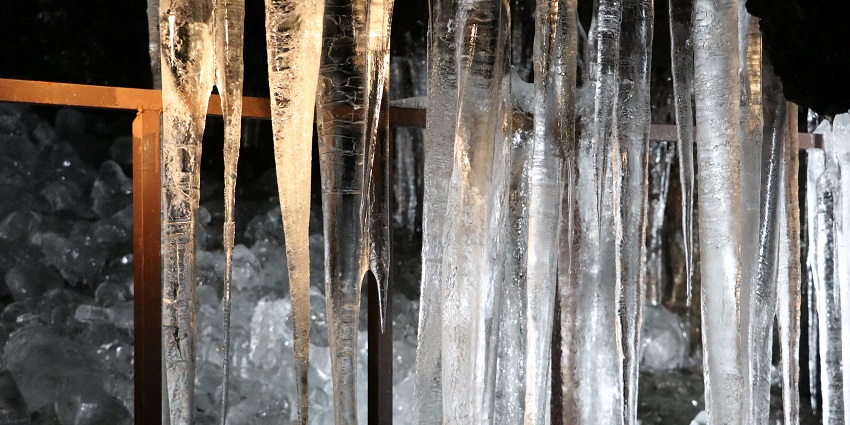
Photo: Osumi Akari / Wikimedia Commons
Narusawa Ice Cave is also located in the Aokigahara Forest, close to Fugaku Wind Cave. The other interesting thing about this lava cave is that its interior has remained frozen throughout the warmer months. Historically, it was used as a cave, with some of the most famous in Japan, where it was used to store the ice. The walk is narrow and adventurous and not ideal for claustrophobes. As it is unique among caves in Japan in its climate, it is a very thrilling place for those who prize natural science and cave exploration.
Distance: 115 km from Tokyo
Best Time To Visit: March to May
4. Abukuma-do Cave
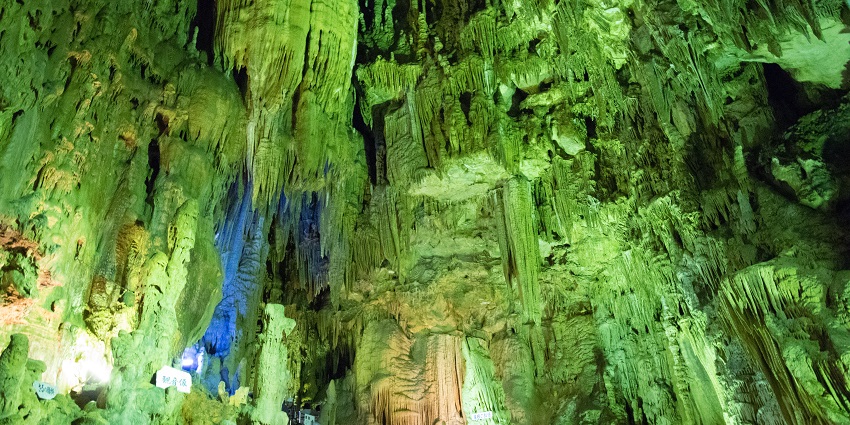
Photo: Σ64 / Wikimedia Commons
Abukuma-do Cave is located in Fukushima Prefecture and is known for its magnificent mineral formations and illuminated caverns. This limestone cave is regarded as one of the important caves in Japan and stretches for over 3,000 meters, with about 600 meters open to the public. They allow exploring crystal-like deposits, underground waterfalls, and narrow corridors. It is one of the famous caves in Japan and it also has music events as a result of its good acoustics. Adventurers and photographers alike should put this site on their ‘must visit’ list.
Distance: 80 km from Fukushima City
Best Time To Visit: April to November
5. Ryusendo Cave
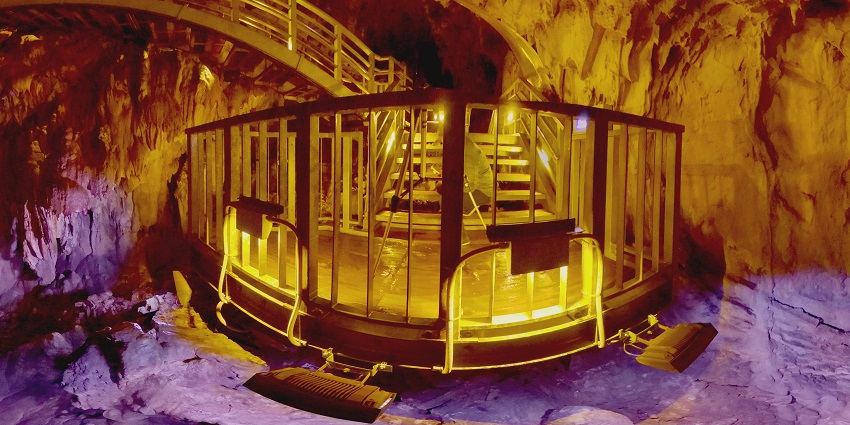
Photo: 利用者:あおもりくま|あおもりくま / Wikimedia Commons
The cave is Ryusendo Cave in Iwate Prefecture, which is famous in Japan for its deep blue underground lakes and huge chambers. They are famous because they are both beautiful and big. The cave covers 5 km of mapped length and about 700 m of open area to visitors and is declared one of the three greatest limestone caves in the country. Ryusendo is recognized as one of the important caves in Japan. It’s an awe-inspiring natural site.
Distance: 110 km from Morioka
Best Time To Visit: May to October
6. Senbutsu Cave
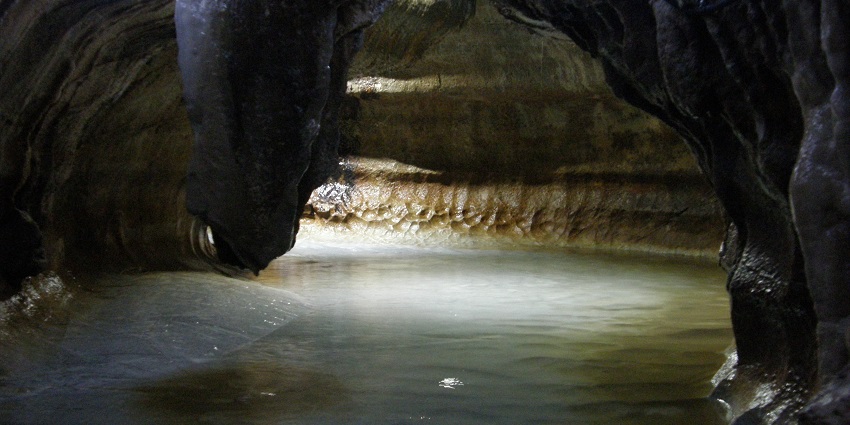
Photo: Szabolcs Arany / Wikimedia Commons
The Akiyoshidai Quasi-National Park features the Senbutsu Cave, which is located in Oita Prefecture, Kyushu. It is famous for its flowing underground river and the narrow water-filled passages. The cave in Japan is an important one but requires visitors to wade through water and, therefore, exploring it is quite adventurous. The cave is enhanced by the serene feel, whether you have the limestone formations or the sound of the stream. It is one of the lesser-known but famous caves in Japan, and it features a combination of excitement and nature for travellers.
Distance: 130 km from Fukuoka
Best Time To Visit: March to May
7. Blue Cave

Photo: Ljegayquezbuk / Wikimedia Commons
In Okinawa, Okinawa prefecture, there is the Blue Cave, or Ao no Dokutsu, a marine cave noted for its miraculous blue reflections underwater. For snorkelling and diving, it is one of the most famous caves in Japan, and anybody who comes to Japan is familiar with it attracting thousands of marine adventure lovers every year. The cave in Japan gives swimmers the chance to float around in a glowing blue tunnel with vibrant, colourful fish surrounding them. It’s perfect for nature lovers and underwater photographers out there and should not be missed if you happen to be visiting an Okinawan coastline.
Distance: 25 km from Naha
Best Time To Visit: April to October
8. Akiyoshido Cave
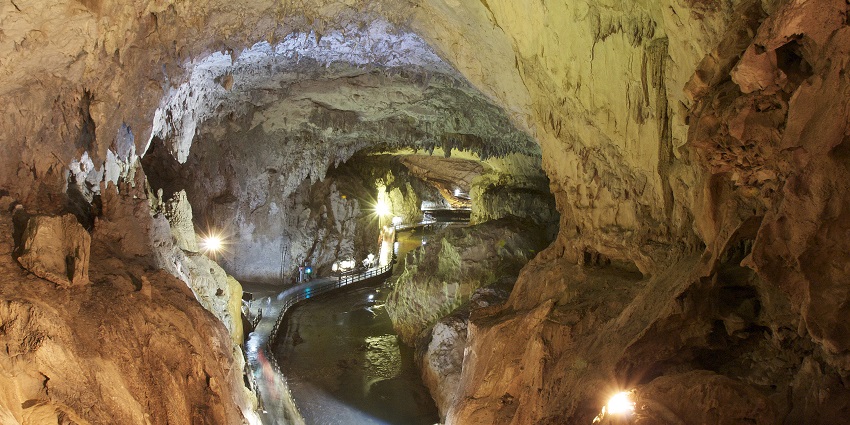
Photo: Slick-o-bot / Wikimedia Commons
Akiyoshido Cave is Japan’s largest and is one of the most important caves in Japan. It is being stretched over 9 kilometers between Yamaguchi Prefecture, and about 1 kilometer is accessible to tourists. It is known for its impressive height as well as for its cave formations and underground waterfalls. It is one of the famous caves in Japan that is shown in textbooks and geography lessons. It can be enjoyed by tourists who can tour along the paved path and enjoy the cool and damp air and naturally sculptured terraces.
Distance: 150 km from Hiroshima
Best Time To Visit: April to November
9. Inazumi Underwater Cave
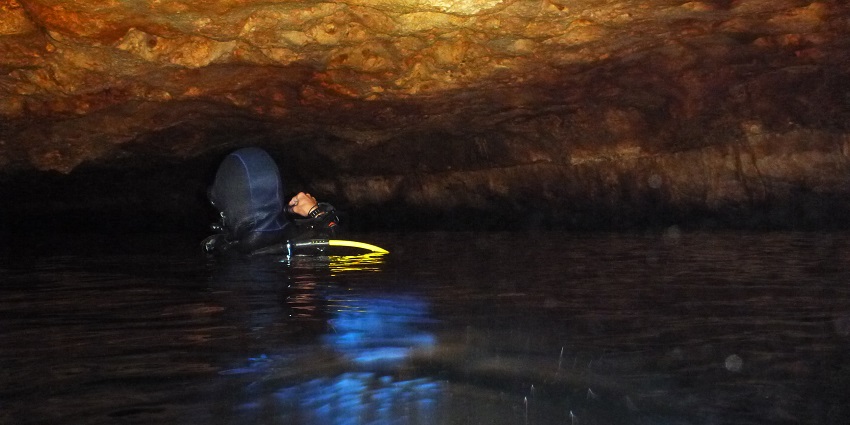
Photo: Wusel007 / Wikimedia Commons
Inazumi Underwater Cave, Oita Prefecture, is an underwater limestone cave formed by a volcanic eruption and underwater springs. It is one of the most unique and important caves in Japan, with stunning stalactites that are partly submerged. The cave is beautifully lit, and walkways have been put there for safe exploration. Being one of the lesser-known caves in Japan, it brings a fantastical underwater world consisting of crystal-clear beauty and scientific wonders to those who are curious.
Distance: 140 km from Kumamoto
Entry Fee: ₹450 / 749.72 Japanese Yen
Best Time To Visit: March to May
10. Onigajo Cave
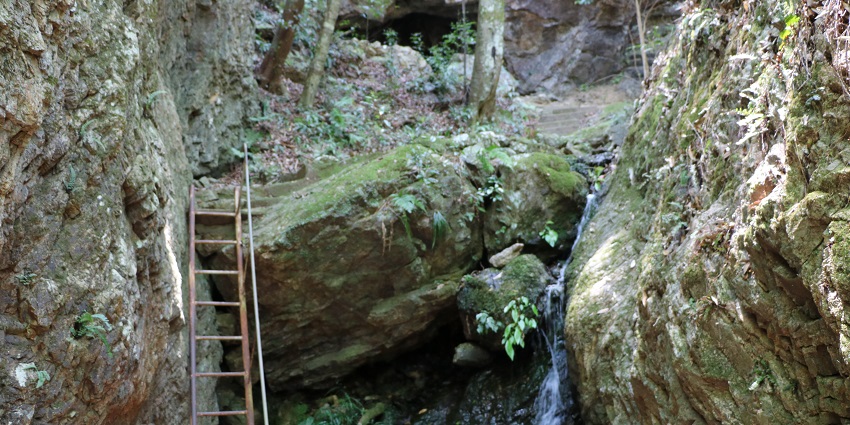
Photo: さかおり / Wikimedia Commons
Kumano’s Onigajo, or hell castle as it is sometimes known, is a natural sea cave system in Kumano City, Mie Prefecture. The caves are shaped by wind and ocean waves to a degree where the unique rock formations are considered one of the most visually striking and famous caves in Japan. This place was once the home of demons, legend tells us. It is one of the important caves in Japan and has panoramic ocean views and hiking trails and is a place of photo opportunity. As a seaside cave in Japan where mythology, geology and beauty are mixed, it is captivating.
Distance: 150 km from Osaka
Best Time To Visit: September to February
Japan’s geological beauty doesn’t end on top, its caves hold centuries of stories, legends, and scientific wonders. If you are looking for a walk through history, a splash of marine adventure, or the thrill of entering the unknown, then these important caves in Japan will be just right for your next adventure. Plan a visit, and get ready to experience Japan’s underground world in all its glory.
Cover Photo: Daderot / Wikimedia Commons


 WhatsApp
WhatsApp
 Twitter
Twitter









